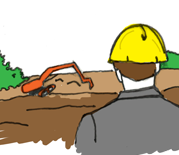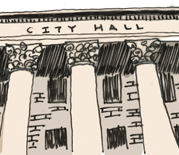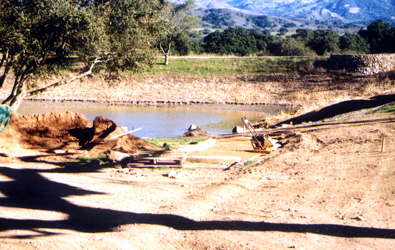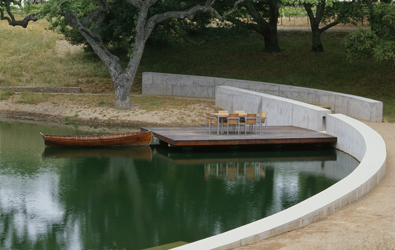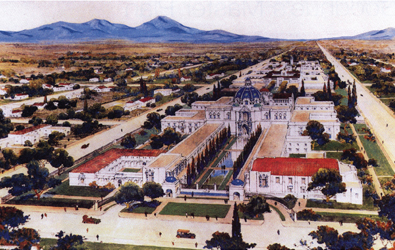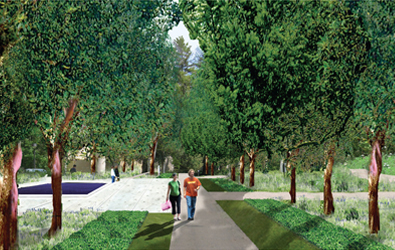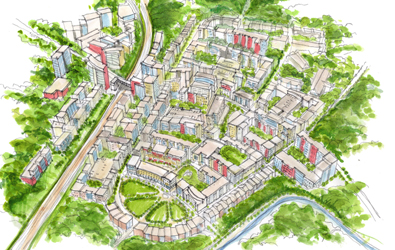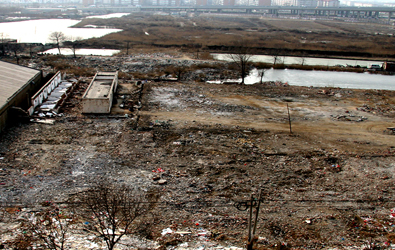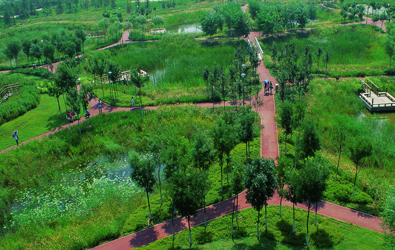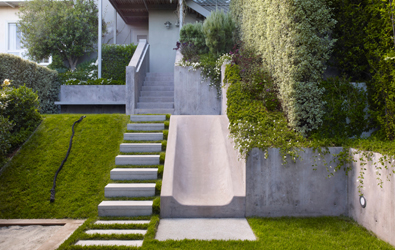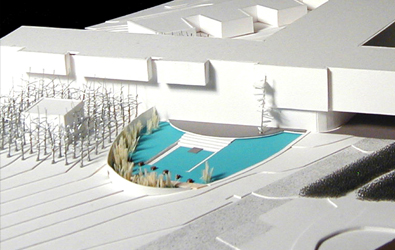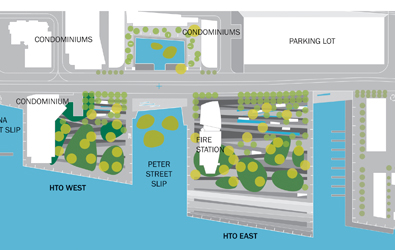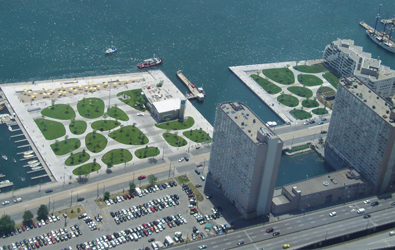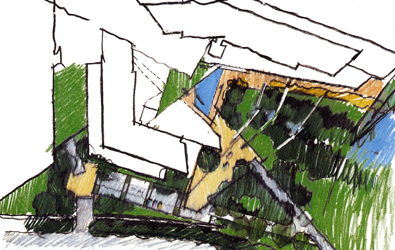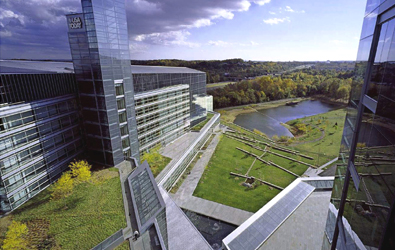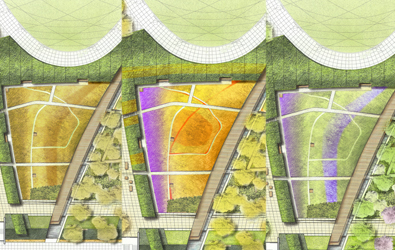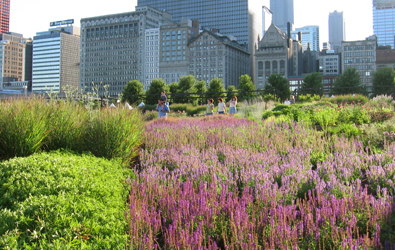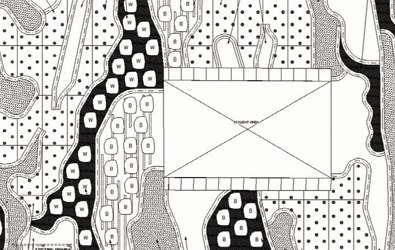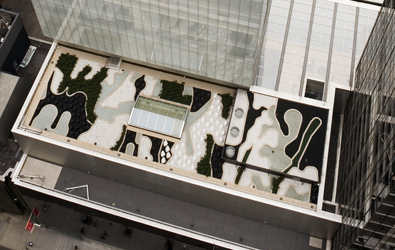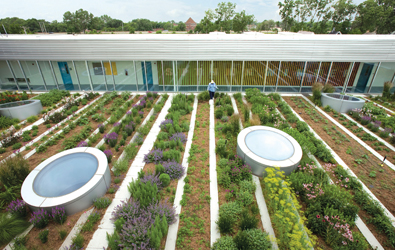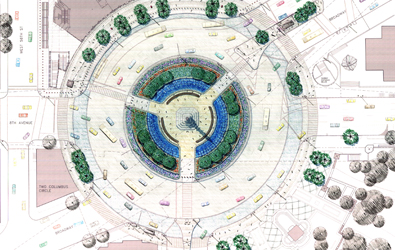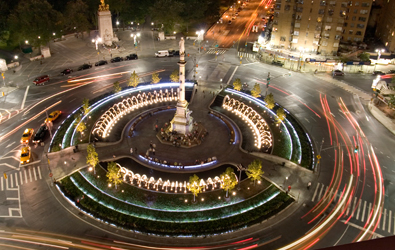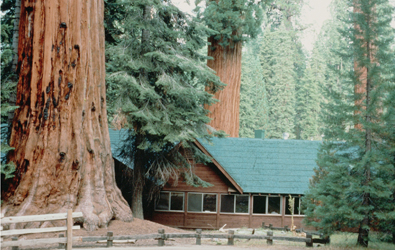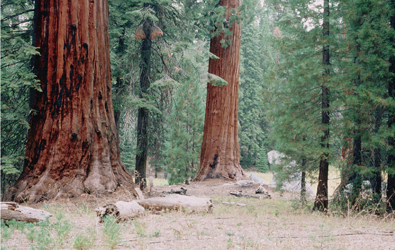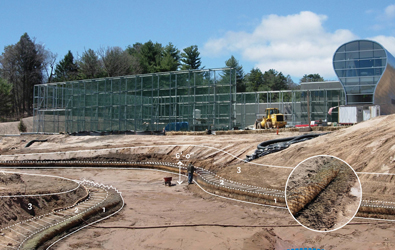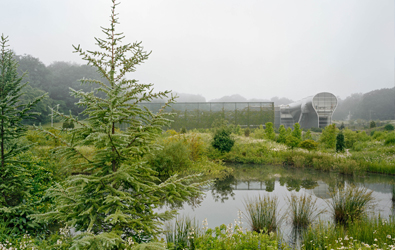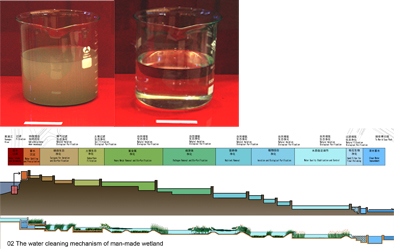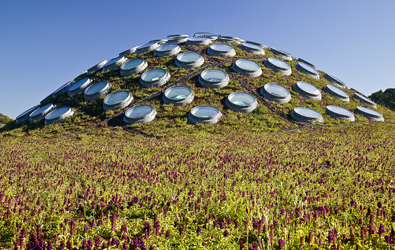
Designing Ideas
Into Action
Everyone loves the big idea, but now it's down to designing specifically how that idea will work. Instead of just a green roof, it's the exact details of how it will look. Not only that, but many projects require a series of drawing as part of a whole master plan or site plan. From there a new set of drawings will cover the exact details of where each individual plant, stone, fountain, or bench should go.
Learn
More
Site Plans
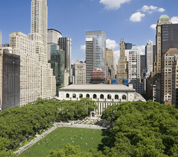
Bryant Park
Home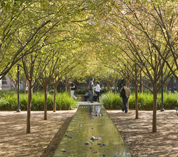
Rice University
ABOUT LANDSCAPE ARCHITECTURE
The Designs
Think of iconic places like New York City's Central Park and the FDR Memorial in Washington, D.C. But also consider your downtown square, your local park, or even your own backyard. Green roofs, urban farms, corporate campuses—all define landscape architecture. Types of projects include:

What's the
Big Idea
It's brainstorming, sketching, or otherwise imagining what will make the site special. Will a park include an amphitheater or an athletic field? Should the space use a green roof, water system, or solar panels? Landscape architects use initial drawings (like this video) or 3-D models to propose the big ideas. If it's a large public project, there may be more opportunity for public feedback.
Learn
More
Tools of the Trade
- Home
All 50 states require landscape architects to earn a license to practice, ensuring that the designs protect the health, safety, and welfare of all users. In fact, you can't even call yourself a landscape architect without a license.
Learn more about careers in landscape architecture.EDUCATION
Designing a Landscape Architect
Think you have what it takes? Landscape architects typically hold a bachelor's or master's degree in landscape architecture, covering a broad spectrum of design, science, and technical know-how. Topics include site design, historic preservation, planning, grading and drainage, horticulture, and even subjects like psychology.
More than 60 schools offer bachelor's or master's programs across the country. Many graduates will go on to work in landscape architecture or other design firms. Organizations with large amounts of land to manage will also employ landscape architects. Companies like Disney, federal government agencies like the National Park Service, local government agencies, parks and recreation departments, universities, and others all staff landscape architects.
 Education
Education About
About
Collaboration Benefits
Benefits 
College campus? Check. Downtown park?
We got that. Hospital grounds? Neighborhood plans? Public gardens? All of that and more. Landscape architects design almost anything under the sky.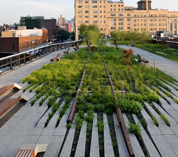
High Line
RELATED DESIGN PROFESSIONS
Architects — Primarily design buildings and structures with specific uses, such as homes, offices and schools.
Civil Engineers — Apply scientific principles to the design and construction of public infrastructure such as roads, bridges and utilities.HomeUrban Planners — Develop a broad, comprehensive overview of development for entire cities and regions.
LANDSCAPE ARCHITECTURE COLLABORATION
Designing with Others
Landscape architects design, often working with landscaping or other construction companies to install those designs. Think of the fashion designer imagining an outfit while a clothing manufacturer makes the apparel, or an artist designing a wall poster that's printed by another company. Landscape architects and contractors are complementary but highly distinct professions.
Beyond construction companies, landscape architects often collaborate with a whole host of other professionals to make up the design team. A project like the High Line not only includes landscape architects, but architects, engineers, and multiple contractors as well. Other projects may include planners, horticulturists, soil scientists, medical professionals, or other specializations in order to solve the design challenge.
- Home

Breaking Ground
and Beyond
A landscape architect's job doesn't end with the final plan. The designers routinely visit the site, meet with the client, and work with the construction team to ensure all goes smoothly. After completion, landscape architects evaluate the success of the project and, depending on the client, continue to oversee management of the site post-construction. Many cities and counties have their own landscape architects on staff to manage all the parks and public land.

ASLA Green Roof
HomeLearn more about how landscape architects can save cities millions of dollars, reduce obesity, and more.
BENEFITS OF LANDSCAPE
ARCHITECTUREDesigning
AwesomeRestoring endangered wetlands, reducing hospital stays, securing government and other buildings, removing toxins from rainwater — these aren't pie in the sky. It's what landscape architects are designing right now. A few examples include:
Healing gardens — Working with medical professionals, landscape architects create landscapes that reduce stress, boost the immune system, improve Alzheimer's symptoms, encourage physical activity, and reduce time spent in hospitals.
Bioremediation — Landscape architects use natural systems of plants, fungi, or soil microbes to transform formerly polluted industrial sites into a safe and valuable public green space.
Green Roofs — Instead of a black tar roof, a living system of plants and soil can actually reduce air temperature by 59 degrees in the summer, save winter heating costs, clean and store rainwater, and provide habitat to pollinating insects and birds.
Energy Savings — Landscape architects can utilize trees, shrubs and other plants to lower a home's heating/cool costs by as much as 50 percent in the summer and up to 8 percent in the winter.

Learning the
Landscape
Design starts here. Before breaking out the sketch pad, landscape architects need to figure out what the client needs, research the site, identify possible uses, and, depending on the project type, solicit community input. In fact, much of landscape architecture focuses on the analysis, planning, and stewardship of the land before any design begins.

